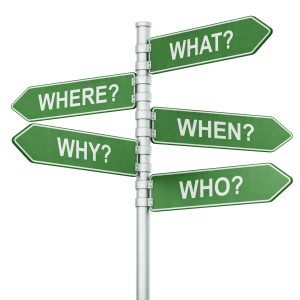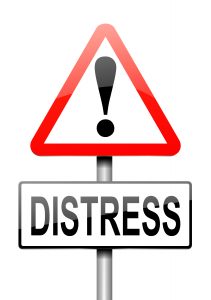Aim: To understand what the term Post Traumatic Amnesia (PTA) means, the range of clinical features associated with PTA and how to help the person in PTA.
Post Traumatic Amnesia (PTA) refers to a state of confusion  and disorientation following traumatic brain injury (TBI), which occurs:
and disorientation following traumatic brain injury (TBI), which occurs:
- When the patient begins to ‘wake up’ after a period of unconsciousness, or
- In the immediate aftermath of TBI where there has been no known loss of consciousness.
The duration of PTA may vary considerably from patient to patient. PTA normally ranges from minutes to weeks however it may occasionally last for months. During PTA the patient is unable to lay down new memories and cannot recall day-to-day events. As the patient emerges from the state of PTA, they begin to become orientated, recall recent events, lay down new memories and develop insight into their situation.
Commonly used medications following traumatic  brain injury include the use of sedating medication and opiate analgesics. The use of such medications may make it difficult to know when PTA has resolved as they may have an adverse effect on cognitive functioning.
brain injury include the use of sedating medication and opiate analgesics. The use of such medications may make it difficult to know when PTA has resolved as they may have an adverse effect on cognitive functioning.
Cognitive recovery following the period of PTA may be limited in some patients who have experienced a severe traumatic brain injury. Consequentially it may be difficult to establish when PTA has resolved if the patient continues to demonstrate significant residual cognitive impairments including ongoing memory impairment. Memory impairment may be permanent (i.e. the person does not regain pre-injury memory functioning) although some progress may be evident over subsequent months and years.
The patient experiencing PTA may demonstrate the following difficulties:
- Inability to recognise and remember where they are due to cognitive problems. They may appear confused about date and time and present as highly disorientated.

- Inability to recall what has happened to them.
- Misinterpretation of events going on around them (e.g. necessary nursing interventions, noises), possibly perceiving them as threats.
- Reduced insight resulting in limited (or absent) understanding of the need for necessary medical interventions (need for hospitalisation, medication, tubes, monitors etc). This may precipitate the person trying to remove tubes, push staff away, leave the ward etc.
- Confusion with regard to where they think they should be (e.g. work, home, shops) potentially causing anxiety and distress.
- Inability to recognise familiar people or learn new faces.
- Reduced attentional abilities.
- Significant communication problems affecting their ability to understand what is said to them and express themselves coherently.
- Inability to provide relevant, basic information such as their name and address.
- Altered speech content i.e. repetitive, tangential (unable to stick to a topic), bizarre and confabulatory (saying things that reflect the person’s misinterpretation of their situation and events). This is related to the amnesia and impairment of the ability to work out what is happening to them).
- Reduced ability to listen, follow instructions, understand information and manage a conversation.
- Inability to plan ahead, problem solve and make reasonable judgements (executive functioning impairment).
- Behaviours may lack clear purpose (e.g. aimless wandering, restless/random movements).
- Disrupted sleep/wake cycle and high levels of fatigue.
- Hypersensitivity (intolerance) to noise and high levels of stimulation (busy environment) is common. Many patients also appear sensitive to bright light. Patients find too much stimulation overwhelming and this may adversely affect cognition, communication, mood and behaviour.
- Wandering and trying to leave the ward, perhaps in search of something/someone or the person may be actively trying to absc
 ond from a situation they find threatening.
ond from a situation they find threatening. - High levels of confusion, anxiety, agitation and restlessness. The patient may be very unsettled and may become highly distressed or fearful.
- Paranoid beliefs resulting from a state of confusion may also be evident (e.g. the patient may accuse staff of trying to poison them via medication or food). This may present as reduced co-operation with care.
- Behaviours may be inconsistent with the patient’s usual personality.
- Behaviour which is not in accordance with social norms.
- Behavioural difficulties e.g. impulsivity, excessive swearing, lashing out, over familiar and disinhibited behaviour and occasionally aggression.
- Reduced ability to initiate activity.
- Low levels of motivation.
- Low mood and social withdrawal.
- Emotional lability.
- Hallucinatory symptoms may arise from a misinterpretation/misperception of the environment. Rarely, they may occur as a symptom of a psychotic disorder.
Other significant issues requiring comprehensive assessment and management, which are likely to arise in the early stages of recovery following TBI, include:
- Physical symptoms e.g. headache, dizziness, nausea, balance problems.
- Pain arising from other injuries sustained at the time of the brain injury.
- Physical impairments related to the TBI and other sequelae including spasticity.
- Physical impairments resulting in difficulties carrying out basic activities of daily living.
- Other medical conditions which predate TBI.
- Management of pre-existing alcohol and substance misuse.
- Difficulty maintaining adequate nutrition and hydration in the context of:
- Dysphagia.
- Confusion and/or distress caused by the presence by feeding tubes. The patient may resist attempts to be fed via tubes and/or attempt to remove tubes.
- Reduced ability to attend to eating/drinking for sufficient periods of time.
- Reduced ability to feed themselves because of fatigue, physical impairment, perceptual difficulties, dyspraxia etc.
- Psychological and psychiatric difficulties (low mood, anxiety, distress etc).
The patient experiencing PTA may be difficult to provide care for due to all the difficulties described above in the context of high levels of confusion and agitation. Difficulties may include poor co-operation/intolerance with necessary care interventions.
As the patient begins to emerge from the period of PTA, their behaviour may become more settled and they may become more co-operative. Attentional and listening skills may improve and the person may begin to show increasing recollection of recent events and understanding of their circumstances.
The duration of the period of PTA is considered to be a predictor of the severity of the brain injury and subsequent levels of disability. Prolonged periods of PTA are associated with poorer long term outcomes, especially in cognitive and psychological and psychiatric domains.
How to Help the Patient During Post Traumatic Amnesia
During the period of Post Traumatic Amnesia a comprehensive multidisciplinary assessment is important in order to try to ensure that the patient receives all necessary treatment and support. Management of the patient during PTA should aim to address all the following issues.
Assessment and Measures to Support Safety and Care during PTA
Support for Family and Friends
Support for Communication, Orientation, Agitation and Behaviour
Management of the Physical Environment and Supporting Activity
Management of Nutrition, Fatigue and Sleep